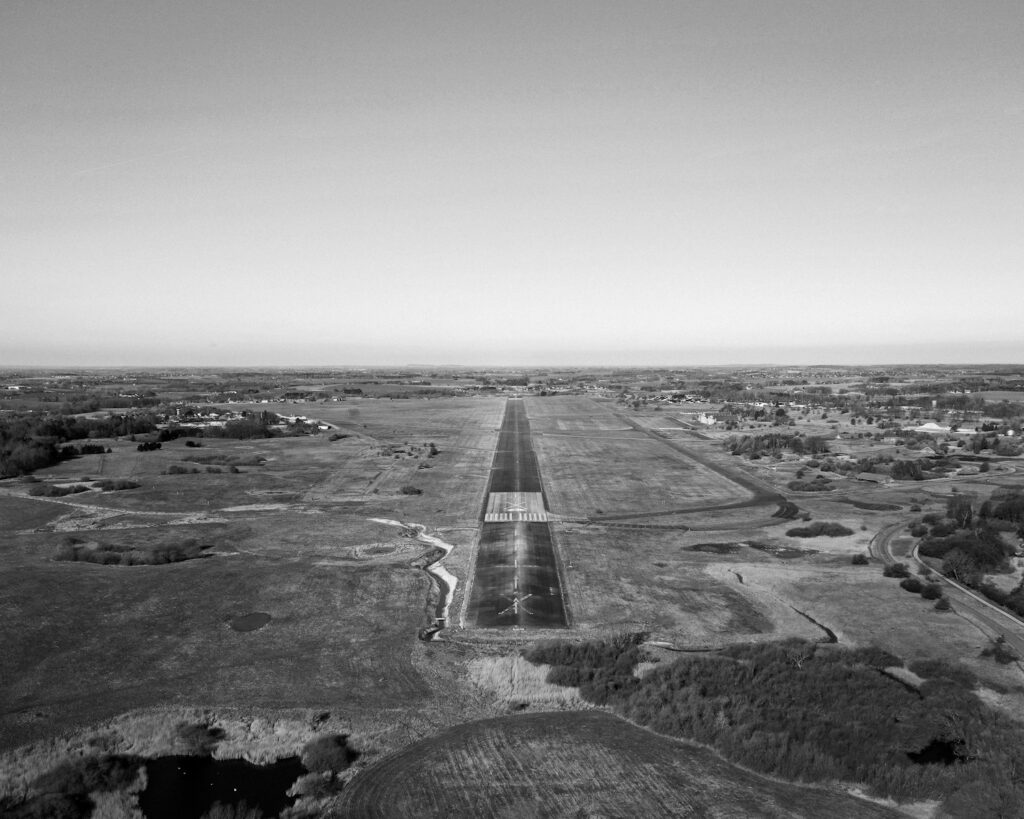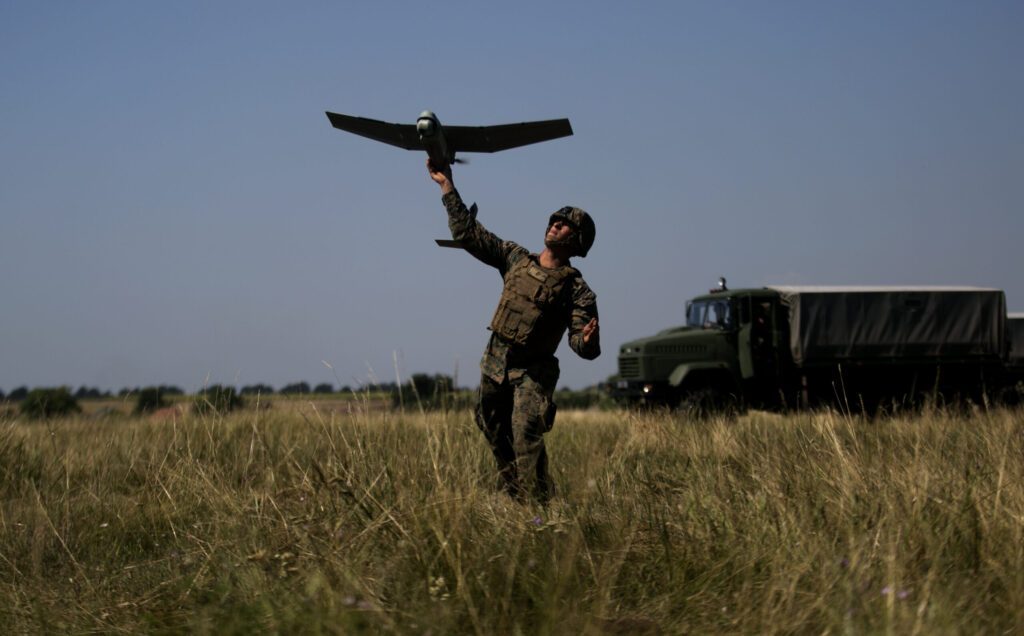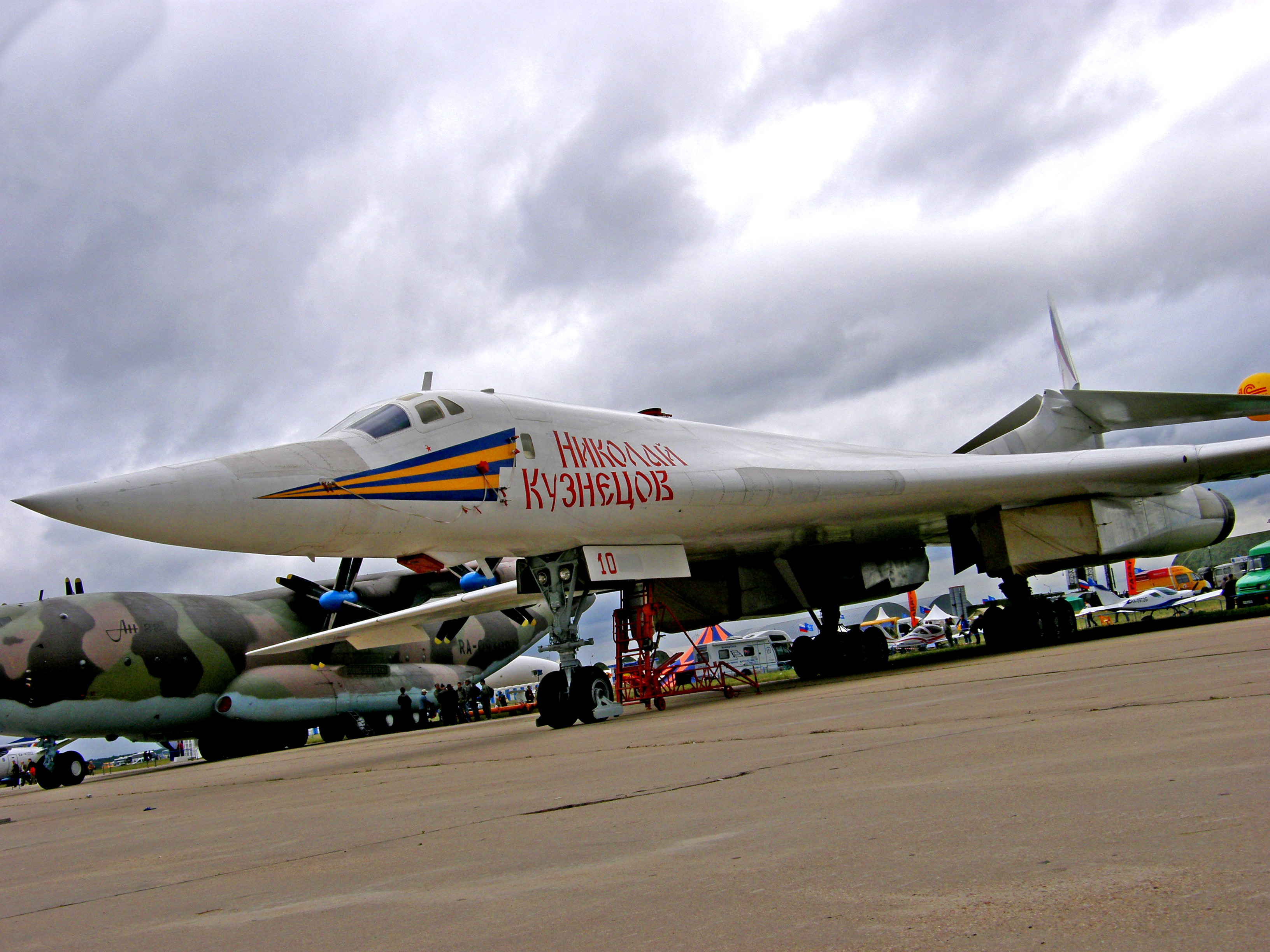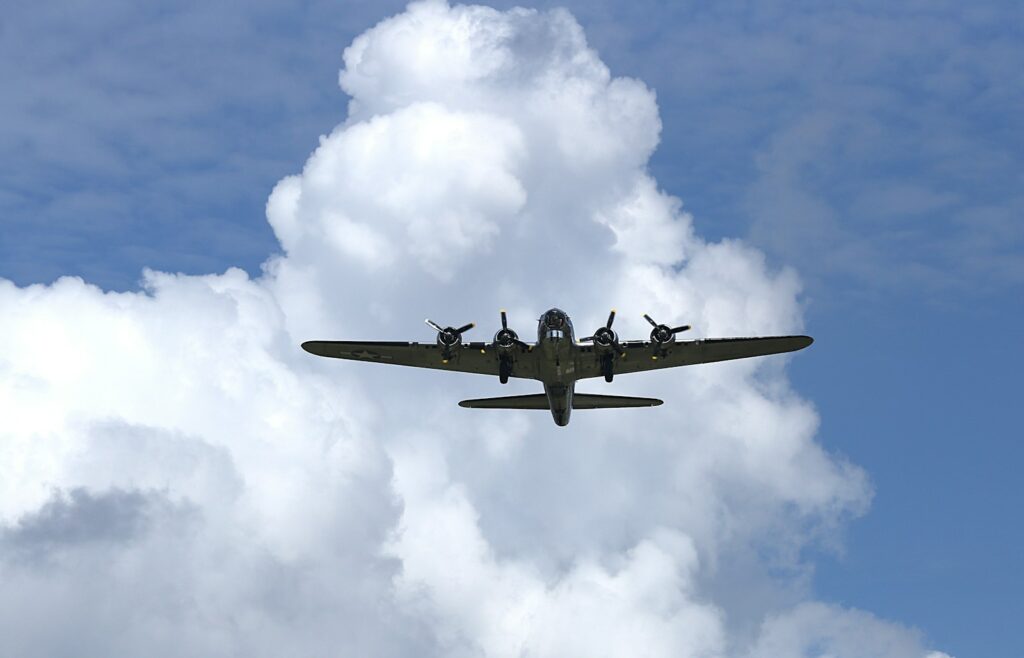
Following Ukraine’s successful “Operation Spiderweb” drone strike on June 1st—an operation that reportedly damaged or destroyed several irreplaceable bombers—Russia’s Aerospace Forces (VKS) have begun dispersing their strategic fleet. This significant move is aimed at safeguarding the remaining high-value assets from potential future attacks of a similar nature.
Among the aircraft being repositioned are the Tu-160 “Blackjack” bombers, which are supersonic, variable-sweep wing strategic bombers. Widely regarded as the most valuable combat bombers in the Russian fleet, these aircraft have reportedly been relocated to remote locations across the country, significantly distant from the Ukrainian border.
A particularly notable destination for the Tu-160s is the Anadyr airbase. Situated in the remote Chukotka region of Russia’s far east, near the Bering Sea, this airbase represents a distinctive strategic choice. Located over 6,750 kilometers (4,218 miles) from the Ukrainian border, it places the bombers far beyond the reach of Ukraine’s current ground-launched drone capabilities.

The same Anadyr base is, however, located remarkably close to the United States. It lies approximately 660 kilometers (410 miles) from Alaska. This proximity to Russia’s primary strategic adversary, while potentially serving other military or geopolitical purposes, underscores the immediate concern driving this decision: protecting the limited number of strategic bombers from Ukrainian drone strikes.
The decision to relocate valuable aircraft to distant airbases such as Anadyr appears to be a deliberate effort to move them out of reach and reduce their exposure to future attacks. This strategy follows the high-risk Ukrainian Operation Spiderweb, in which drones reportedly concealed in what appeared to be civilian container trucks were used to strike airbases located deep within Russian territory.
The surprise attack carried out on June 1st targeted four Russian military airbases. Ukraine initially claimed the strike damaged 41 military aircraft, including Tu-95 and Tu-22 strategic bombers as well as A-50 airborne early warning and control aircraft. Although subsequent assessments revised the figures, the damage inflicted was substantial enough to trigger a significant dispersal of Russia’s bomber fleet.
German intelligence reportedly assessed that approximately 10 percent of Russia’s long-range bomber fleet was damaged. United States estimates suggested that up to 20 aircraft were affected, with around 10 reportedly destroyed. Even if these losses fall short of initial claims, they nonetheless represent a considerable setback for Russia’s strategic aviation capabilities.

The Anadyr airbase itself holds historical significance. It was originally constructed during the Soviet era to serve as a base for strategic bombers and reconnaissance aircraft. Its initial mission was to monitor US military activity in Alaska and the Bering Sea, a role that gains renewed relevance with the current relocation of bombers.
The base has increased in importance as Moscow places greater emphasis on the strategic value of the Arctic region. It also hosts other strategic assets, including Tu-95 Bear and Tu-22 Backfire heavy bombers on a rotational basis, making the deployment of Tu-160s there consistent with its established operational profile.
However, relocating the Tu-160s to a remote base such as Anadyr presents significant logistical challenges. Maintaining fuel supplies, munitions, and performing maintenance operations at this location is inherently difficult. The Anadyr Airfield (Ugolny) is supported exclusively by airlift and seasonal maritime deliveries.
This limited accessibility imposes clear constraints on sustained large-scale operations. Unlike bases connected by road infrastructure, Anadyr’s dependence on air and sea transport complicates resupply efforts and introduces potential vulnerabilities to disruption, though in a manner distinct from the recent drone attacks.
Paradoxically, the logistical limitations of the Anadyr airbase also provide a degree of protection against the specific drone tactics employed in Operation Spiderweb. The absence of road access to the base eliminates the threat of drones being transported via truck systems parked nearby, which is believed to have facilitated Ukraine’s attack.
Although relocating aircraft to Anadyr can be viewed as a dispersal measure, stationing bombers at this particular base is not unusual. The Russian Aerospace Forces (VKS) regularly use Anadyr to house Tu-160, Tu-95, and Tu-22 bombers on a rotational basis as part of their standard operational patterns.
Russia’s decision to position its bombers near the edge of U.S. airspace may also carry strategic implications. It highlights both Russia’s vulnerability to Ukrainian drone attacks and a deliberate effort to safeguard its relatively limited strategic bomber fleet.

The geographic choice of Anadyr, despite its close proximity to the United States, is perhaps less surprising than it may initially appear. Anadyr is a base regularly utilized by Russian forces. Moreover, as analysts note, Russia and the United States are not currently at war, meaning the United States is not expected to attack the base, just as Russia is not expected to attack Alaska.
There is, however, a certain irony in this strategic positioning. By relocating valuable assets away from the conflict zone in Ukraine, Russia is placing its military resources closer to its primary strategic adversary, the United States. This proximity raises questions about the strategic considerations influencing Moscow’s decisions.
Analysts describe this as a paradoxical strategy driven mainly by the urgent need to mitigate recent losses rather than a long-term deterrence posture towards the United States. The immediate priority to protect the bomber fleet from Ukrainian drone attacks appears to take precedence over the broader strategic implications of stationing them near U.S. territory.

According to analysts, Putin and the Kremlin now regard Ukraine’s drone threat as a more immediate and pressing danger than the conventional military capabilities of Washington. This assessment reflects the evolving realities on the ground in Ukraine and the demonstrated ability of Ukrainian forces to conduct deep strikes within Russian territory.
The Tu-160 remains Russia’s most valuable combat bomber, carrying immense significance within the Russian Aerospace Forces’ fleet. Since 2015, the Defence Ministry has devoted substantial resources to restarting its production, underscoring the strategic importance attributed to this aircraft.
The history of the Tu-160 program is complex. Production halted following the collapse of the USSR. Many of the aircraft inherited by Ukraine were destroyed in the 1990s under Western pressure. Additional losses resulted from crashes within Russia, leaving only a limited operational fleet today.

Currently, only an estimated 16 Soviet-built Tu-160s remain in service, a figure significantly below the Russian Aerospace Forces’ plan to operate a fleet of 70 aircraft. The ambition to expand this fleet has driven efforts to resume production and introduce modernized variants.
In January 2023, production was reported to be undergoing significant expansion. This followed the maiden flight of the first new Tu-160M bomber in January 2022, signaling Moscow’s commitment to revitalizing its strategic bomber force with modernized airframes.
Substantial losses to the Tu-95MS strategic bomber fleet during Ukraine’s Operation Spiderweb on June 1st have heightened Moscow’s sense of urgency. These losses underscore the necessity to protect the remaining Tu-160 fleet and to ensure the timely operational deployment of the 54 planned new aircraft.
Procurement plans for the Tu-160 may be further expanded if the PAK DA next-generation stealth bomber program—which is reportedly significantly behind schedule—experiences additional delays or is even cancelled. This situation emphasizes the continued relevance of the Tu-160 and the reliance placed upon it.

While relocating the bombers places them far from the Ukrainian front lines, the Tu-160s maintain the capability to conduct precision strikes when necessary due to their exceptional range, the longest within Russia’s strategic bomber fleet.
These aircraft are compatible with cruise missiles such as the Kh-101, which have an operational range of 3,500 to 4,000 km. This allows the Tu-160s to theoretically reach targets within Ukraine even when operating from bases as far as 6,750 km away, using these long-range weapons.
The redeployment thus serves a dual purpose: it protects Russia’s limited number of Tu-160s—estimated at around 17 units according to one source, though another indicates 16 Soviet-built aircraft remain in service—while preserving their strategic relevance.

Operating from Anadyr presents significant logistical challenges. The difficulty in sustaining fuel supplies, munitions, and maintenance operations makes it more complicated to prepare jets for large-scale cruise missile salvos against Ukraine compared to bases closer to the front lines or those with superior infrastructure.
As one analyst observed, “You can move the airplanes, but you cannot move the weapons and the engineering equipment.” Expanding weapon storage and ground support equipment at a remote base such as Anadyr to enable simultaneous loading operations across multiple locations would require considerable expenditure by Moscow.
Despite these operational challenges for strikes on Ukraine, the relocation of bombers to Anadyr may signal intentions for other strategic uses. With Russia continuing deterrence patrols across the Atlantic, Arctic, and Pacific regions, Anadyr is well-positioned to support such missions.

One analyst suggested that the presence of the bombers at Anadyr is intended “to stage for patrols towards Alaska and potentially down into the Sea of Japan.” This activity can be interpreted as a form of signaling, which Russia conducts “reasonably frequently in the Pacific towards Alaska,” often prompting interception responses from both the US Air Force and Canadian forces.
While the primary motivation for relocating the bombers appears to be protection from Ukrainian drone threats, the geographic location of the Anadyr base also enables these aircraft to conduct strategic patrols near North American airspace. Such patrols are standard practice but have gained increased significance given the bombers’ new positioning.
Another analyst noted that the loss of approximately 10 percent of Russia’s Tu-95 and Tu-22 bombers during Operation Spiderweb imposes a “significant” burden on the remaining fleet. This pressure could potentially lead Russia to reduce some of its routine long-range patrols, including those in the Pacific region.

The Tu-22 and Tu-95 models are no longer produced by Russia, making losses difficult to replace. Relocating these aircraft hundreds of miles away from their regular engineering teams and support infrastructure further complicates maintenance, potentially reducing their operational tempo.
A former RAF commander noted that relocating bombers would have a “huge” impact on Russia’s cruise missile sorties over Ukraine. He stated, “It becomes harder to maintain them. You will see significantly fewer of these planes flying,” highlighting the practical difficulties caused by the dispersal.
Ukraine’s successful drone attack has also provided important lessons for Western air forces. For the RAF and others, the daring strike emphasized the importance of dispersing jets, even prompting recent defense reviews to recommend planning for the relocation of aircraft to commercial airfields during times of crisis.
Regarding possible Western involvement in Operation Spiderweb, a former British military intelligence officer offered his perspective. He suggested Ukraine may have received assistance from the US or Western countries to carry out the attack, citing the necessity of near real-time satellite imagery.

He suggested that the necessary satellite imagery needed to be “an hour old, not a week old,” and could only have been provided by American satellites rather than European ones. Such timely intelligence is essential for planning and executing a complex, deep strike operation.
Furthermore, the officer noted that the drones, transported via trucks, would have traveled a considerable distance through Russian territory. He pointed out that Russia has checkpoints and counter-intelligence operations, indicating that the roads would likely have needed to be cleared in some manner.
He argued that this road clearance could “only have been achieved with assistance from the US, using satellites and other reconnaissance assets.” Whether higher authorities, such as former President Trump, were aware of this assistance was raised as a separate question.

Another perspective suggests that Russia’s relocation of bombers should not be interpreted as Moscow “running scared.” Instead, one analyst characterized it as a competent redeployment of assets following a hard-earned lesson delivered by Ukraine’s successful strike.
The move, especially involving the valuable Tu-160 fleet, highlights the significant impact of Ukraine’s recent actions. Although the exact number of Tu-160s damaged or destroyed in Operation Spiderweb remains unconfirmed—with some reports indicating that damage was mainly limited to older models—the dispersal clearly reflects concern for their protection.
Available reports primarily indicate that the most severe damage to Russia’s bomber fleet occurred among the older and less capable Tu-95MS and Tu-22M3 platforms. Nevertheless, these losses were substantial enough to prompt Moscow’s urgent decision to safeguard its strategic assets, particularly the newer and more valuable Tu-160 fleet.

The ongoing production of new Tu-160 bombers, a challenging endeavor pursued since 2015, may be accelerated or expanded in response to recent losses. The urgency to strengthen and modernize the strategic bomber force has become more pronounced for Moscow.
The strategic landscape for Russia’s long-range bomber fleet has fundamentally changed following Ukraine’s successful drone operation. The imperative to protect these valuable assets from future drone swarm attacks has necessitated a significant geographic redistribution.
While this strategic repositioning addresses an immediate threat, it also creates new logistical challenges and places some of Russia’s most capable bombers closer to the United States. This reflects a complex strategic calculation driven by the pressures of the ongoing conflict.
The decision underscores Moscow’s recognition of the growing threat posed by Ukraine’s drone capabilities. Safeguarding the strategic aviation fleet, which is crucial for both conventional strikes and nuclear deterrence, has become a top priority, even if this involves accepting new operational difficulties and increased geopolitical proximity.

The presence of Russia’s most advanced operational strategic bombers stationed just hundreds of miles from Alaskan territory, within close proximity to American airspace, serves as a striking visual reminder of the unforeseen consequences of the conflict in Ukraine. This relocation, driven by necessity, creates a paradoxical strategic scenario that will continue to attract close scrutiny from military analysts worldwide.
This evolving deployment pattern highlights the dynamic and unpredictable nature of modern warfare, where relatively inexpensive drone technology can compel a major power to reposition some of its most costly and strategically important assets, even placing them near the doorstep of a principal global rival.




